In Memoriam
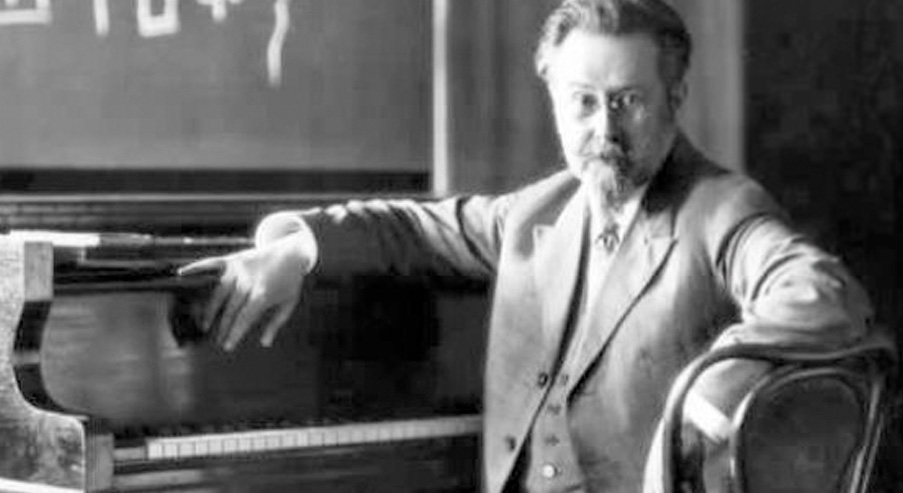
We honour those who have gone before us, who have paved the way for us, who have formed us, who have nourished us, given us of their wisdom, their life experience, their expertise and the fruits of their experience. We acknowledge with gratitude the debt that we, and future generations, owe them. We celebrate their lives and their heritage.
Search by
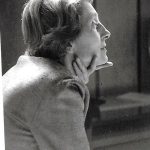 BÜNNER, Gertrud Valeska
BÜNNER, Gertrud Valeska
Gertrud Valeska Bünner (1912–2011) graduated from high school in 1931 and began to study at „Pädagogische Akademie Dortmund“ (Germany). There she came in touch with eurhythmics (Rhythmische Erziehung) for the first time. Shortly afterwards she attended the eurhythmics seminar at the „Folkwang-Schule“ led by Elfriede Feudel. From the start she strived for seeing educational science in a wider context of culture, ethics and religion. So it was that she participated in the making of Elfriede Feudel’s first extensive book.
In 1938 she took her exams in eurhythmics as a main course as well as the second "Teacher Education Examination" including a demonstration lesson in eurhythmics. This was followed by years of busy activity mainly consisting of teaching at schools and providing further education.
In the year 1949 Gertrud Bünner succeeded Elfriede Feudel as a professor at the eurhythmics seminar at the University of Music and Performing Arts, Stuttgart. There she also taught students at the departments of school music, opera and speech training. Her main focus while working at the University was to strengthen the position of eurhythmics at primary school and to supply more public interest by organizing information events and presentations. She was worried that discussions within the faculty and social changes might endanger the status of eurhythmics as a main subject at the University.
Besides working at the University of Music Gertrud Bünner engaged in various fields, e.g. the german associations „Arbeitskreis Rhythmische Erziehung“ and the „Bundesverband Rhythmische Erziehung“. She also gave courses for teachers of music, speech therapy and special education in Germany and other countries, thus emphasizing the importance of eurhythmics.
Gertrud Bünner retired in 1979. She is known as an author of numerous articles in magazines and books (e.g. Bünner/ Röthig: “Grundlagen und Methoden rhythmischer Erziehung”) and she never stopped dealing with the importance and development of eurhythmics as long as she lived, that is for almost a century.
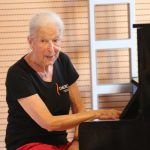 DI SEGNI-JAFFÉ, Louisa
DI SEGNI-JAFFÉ, Louisa
Louisa Di Segni-Jaffé was trained in the Dalcroze Method in London and Geneva, where she obtained the Diplôme Supérieur in 1958.
She spent her entire professional life spreading the Dalcroze Eurhythmics in Italy.
She taught children and adults, giving workshops in continuous education, training musicians and teachers in the method, offering summer courses. As an expert in the Dalcroze method she collaborated with national public entities and private associations.
She taught in the Dalcroze Certificate training program organized by the AIJD (Associazione Italiana Jaques-Dalcroze) as part of the DEIEB (Dalcroze Eurhythmics Examination Board).
She edited for ERI the italian version of “Rhythm, Music and Education” by E. Jaques-Dalcroze (1986) and for EDT a second edition (2008). She published several articles on the method.
With Giovanna Martinelli, Louisa edited for EDUP the italian translation of Elisabeth Vanderspar’s “A Dalcroze handbook: Principles and guidelines for teaching eurhythmics” (2013).
For the RAI (Radio Televisione Italiana) she created the program “Vivere la musica” (Living music) and for the Radio Vaticana the broadcast “Viviamo la musica” (Let’s live music).
Louisa was extensively present in various international congresses: e.g., at the Institut Jaques-Dalcroze in Geneva and at the Carnegie Mellon University in Pittsburg (USA), etc.
Louisa was a founding member of the AIJD.
On December 6th, 2019, she left us.
We remember her in the words of Louise Mathieu:
« Louisa Di Segni-Jaffé a contribué de façon remarquable au développement de la rythmique Jaques-Dalcroze en Italie. Elle a été une source d’inspiration pour toute la communauté dalcrozienne, et nous lui en sommes immensément reconnaissants. Sa force et sa vivacité d’esprit resteront à jamais gravées dans notre mémoire ».
 FARBER, Ann
FARBER, Ann
Is Director of the Dalcroze School of Music at the Lucy Moses School in New York City, offering classes for adults and children, as well as Dalcroze teacher training. She teaches at the Special Music School of America, a public school in New York City for musically gifted children. In addition, Anne maintains a private piano studio and serves on the summer faculty at the Longy School of Music in Cambridge, MA. Anne, B.A. Comparative Literature, University of Wisconsin, earned the Dalcroze Certificate and License at the Dalcroze School of Music in New York under Dr. Hilda Schuster, and the Diplôme Supérieur at L’Institut Jaques-‐Dalcroze in Geneva. As an active clinician, Anne presents workshops throughout the United States, Europe, and Japan in Dalcroze studies: Eurhythmics, Solfège, Improvisation, and Pedagogy. She has performed two-‐piano improvisation recitals with colleagues, Joy Kane and Lisa Parker. Her articles have appeared in The American Dalcroze Journal, Music Educators Journal, Keyboard Companion, National Music Council Newsletter, The Bennington Review, and Dissent.
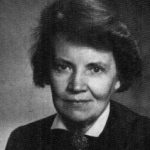 FEUDEL, Elfriede
FEUDEL, Elfriede
Elfriede Feudel, born Thurau (1881-1966) trained as a primary school teacher and studied music at the Berlin Conservatory at the same time. The discovery of the body as an instrument during a performance of Émile Jaques-Dalcroze was her groundbreaking key experience. Like the Swiss Mimi Scheiblauer, with whom she was in friendly contact throughout her life, she was one of the first eurhythmics students in Hellerau. From 1911-1913 she studied with Dalcroze and finished with the diploma. In 1915 she passed the final exam in school music and published her first book about eurhythmics at school. From 1916-1919 she worked as a music teacher and 1918 she married the painter and future supporter of eurhythmics Alfred Feudel.
In the 1920s she was engaged with methods of related fields, among others music and dance, in order to put those new systems in connection with eurhythmics. This interaction strengthened her in her self-imposed mission of saving the basic ideas of Dalcroze and preserving it for Germany. She adapted Laban’s insights into space, time, and energy as basic elements of rhythmical movement and declared the “development of spontaneity, improvisation, and creativity” to be the goal of eurhythmics education. In the same time Feudel was very active in committee work. In 1926 she was founding member of the German Eurhythmics Federation (Deutscher Rhythmikbund) and later she was board member and member of various subsequent associations. As a teacher in higher education she led eurhythmics classes at different music universities in Germany such as Dortmund, Essen and Leipzig and did not leave Germany during the Second World War. From 1947-49 she rebuilt the eurhythmics class at the University of Music Stuttgart.
After 1950 Feudel worked as a lecturer and wrote down her concept of eurhythmics. Her great talent for free speech, her gift for improvisation and her persuasion in teaching and presenting her principles helped her gaining a lot of attention and recognition. This contributed to the implementation of her issue, the diffusion of the pedagogical elements of eurhythmics. Her publications, rarely extensive in the field of eurhythmics, include several books and lots of articles in professional journals for music, social and therapeutic education.
Feudel saw the pursuit of the “breakthrough to the rhythmic in education” (Durchbruch zum Rhythmischen in der Erziehung) as only achievable if it was understood as a common task of practitioners and scientists. Feudel no longer wanted the elements of time, space, energy, form to be understood merely as the common elements of music and movement, but as fields of experience and the actual matter of subjects of eurhythmics. Music should no longer be just a professional goal, but an instrument of education. She relied on the wholeness, self-activity, and genius of the child, whose rich, invested gifts and abilities have to be developed. With these ideas of education Feudel became a pioneer of eurhythmics in Germany.
 HENKE, Herbert
HENKE, Herbert
Herbert Henke (1931-2015) held music education and voice degrees from Oberlin, a doctorate in music education from the University of Southern California, and the License in Dalcroze Eurhythmics from Carnegie Mellon University. He studied Orff Schulwerk at a University of Toronto institute. Prior to joining the Oberlin faculty he taught at the University of Maryland and in the Oberlin and Cleveland Public Schools. Dr. Henke was active as a clinician in eurhythmics, music education, and choral music. He served as an artist-in-residence and guest lecturer at universities and colleges throughout the United States, Taiwan, Germany, Sweden, Australia, England, Japan and South Korea. He presented workshops for music teachers in the United States and Canada, for the European Council of International Schools in The Hague, Hamburg and Brussels, and for the Department of Defense Dependents Schools in England. In 1995 and 1996 he presented six extended workshops for teachers and university students in Taiwan.
In the spring of 1991 he was a guest lecturer in eurhythmics and music education in Freiburg, Hannover, and Munich (Germany). During September 1990, he taught choral conducting, eurhythmics, and conducted the Chorale at the Sydney (Australia) Conservatorium of Music. In 1984 he was a guest professor of conducting and eurhythmics in Sweden and, in 1981-82, he served as choral director and acting chairman of the music department at the American School in London. He also served as a music consultant in El Salvador and in Costa Rica.“Herb was a wise and generous presence among the faculty and a legendary teacher to countless students,” says former colleague Steven Plank, Oberlin’s Andrew B. Meldrum Professor of Musicology. “His teaching, be it of music education or eurhythmics, was inspired by a deep love of music-making and, I suspect, an instinctive understanding of the ways in which music touches our humanity.
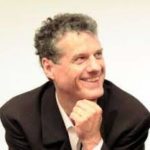 HILLE, Paul Heinrich
HILLE, Paul Heinrich
Obituary a. o. Univ. Prof. Paul Hille
We mourn Paul Hille. He left us far too early on February 27th, 2022, at the age of 65, after a serious illness. He was a colleague who was highly valued by everyone and who always focused on the human aspect of his work.
Born in Borghorst in German Westphalia, Paul studied school music, eurhythmics and piano in Detmold. As a postgraduate, he obtained the Diplome Supérieur de la Méthode Emile Jaques-Dalcroze on a DAAD scholarship in Geneva and later studied "L'Art de l'Écoute" (The Art of Hearing) with François Louche in France. Paul came to the University of Music and Performing Arts Vienna (mdw) in 1988 where he taught for almost 30 years. He started out with a teaching position, became a contract teacher in 1995 and became a contract lecturer in 2003 through a habilitation process. In addition to his regular teaching, Paul provided many creative impulses in his field. He initiated and led for eleven years the spring improvisation event series "Carpe Impro". In this context, he succeeded in winning over colleagues from various mdw disciplines and institutes (composition, conducting, instrumental popular music, church music, piano in music education, music therapy) for valuable cooperation. In addition, Paul invited external expert teachers such as Herbert Wiedemann, Peter Herbert and Philipp Feeney. For years, Paul was involved with the mdw's “Exilarte: Zentrum für verfolgte Musik” (Center for Banned Music), cooperating with other universities, schools, museums and the "Haus der Geschichte" (House of Austrian History) to organize events commemorating Jewish artists and the Holocaust.. This work was interrupted in 2020 due to the pandemic. For several years, Paul was active on the mdw's Committee of Studies and was particularly committed to the subject of "Aural training according to the methods of eurhythmics", which was designed to enable students of eurhythmics to be able to offer practice-oriented, enjoyable and stimulating ear training with different age groups in music schools. In addition to his activities at the mdw, Hille taught at institutions such as the Performing Arts Studios Vienna and the Music and Art University of the City of Vienna. He also passed on his knowledge and teaching expertise in numerous lectures, courses and workshops worldwide. His international visits included Japan, China, Taiwan, Russia, Latvia, Sweden, Greece, Italy, Switzerland, Germany, Mexico, Canada and the USA. In addition, Paul worked as a pianist, composer and arranger in professional music theater. He also authored specialist publications and organized symposia such as "Hörraum" (2012; nominated for Austria's "Lifelong Learning Award") and "Wanted: Jaques-Dalcroze" (2019). Paul also initiated and implemented the production and dedication of a memorial plaque on the childhood home of Émile Jaques-Dalcroze in Vienna, which was presented as the opening ceremony for the 2nd International Conference of Dalcroze Studies in 2015. In 2015, Paul was elected President of FIER, the international association for eurythmics teachers. He was also a passionate choir singer, most recently in the Wiener Singverein, and found great value in meditation and Qi Gong practices. Paul's wide-ranging commitments testify to his tireless interest in the arts and their further development and dissemination. He was always concerned with building bridges between people and groups and eliminating conflicts. He will be remembered as a caring master teacher and a deeply warm, humane and peace-loving person.
Angelika Hauser-Dellefant
Michael Schnack
 HOELLERING, Amélie
HOELLERING, Amélie
Although she died in 1995, Amélie Hoellering’s radical influence continues in today’s teaching of eurhythmics in Germany. Her passion and commitment to the subject were always driven by the quality and dynamics of interpersonal relationship--an aspect integral to her teachings, and to the students’ practices. Amélie actively sought and provoked controversial discussions, but always ensured a living and in-depth dialogue of the matter at hand. This type of discussion in large part, explains her conviction “...that only when professional competence (I have the knowledge to accomplish the task) is supplemented with social competence (I am capable of dealing with any conflicts that may arise) is a person capable of making decisions and bearing responsibility.”
Amélie’s teaching gestalt revealed her various aspects as a human being, an artist, a pedagogue, a psychologist, a painter, and a musician: frequently all at the same time! As a teacher she awakened her student’s self-awareness and potential. Her piano-improvisations alone, inspired and motivated each one to explore uncharted territories of movements, and in doing so, actualize themselves at ever-deeper levels.
In the introduction of her book, “Zur Theorie und Praxis der Rhythmischen Erziehung” (On the Theory and Practice of Rhythmic Education), first published in 1971, and again in 2013 she writes about the essential features of holistic teaching:
“Basically, we place the students between the polarities of body and mind, adaptability and autonomy. This approach provides students with a hands-on task to practice finding balance. This happens by presenting the students with the challenge of discovering the solution to the task on their own, and to a certain degree, even formulating the task themselves while continually adapting it to the given factors, boundaries, and parameters.” In other words, though initially unconscious, body awareness and movement are grasped mentally and thus, becomes more consciously controlled via eurhythmic exercises.
When tasks involving eurhythmics are placed at this interface and ‘meeting point’ between I and you, between adaptability and autonomy or leading and following, they then create a source of conflict—and hence experience—which must be reflected upon and processed in order to, (in keeping with Dalcroze,) “…teach our children to become conscious of their own personality, to develop their temperament, and to become unfettered from all ties, and so find their very own rhythm of life.” (from the introduction to “Rhythm, Music and Education” E. Jaques-Dalcroze). Amélie Hoellering devoted her entire life to the demanding task and challenges of eurhythmics, and she inspired her fortunate students to strive for the same.
Prof. Amélie Hoellering, founder of Rhythmikon, studied eurhythmics in Leipzig and Stuttgart with Dalcroze student Elfriede Feudel (1881-1966). She completed her studies at the Institute for Psychotherapy and Psychoanalysis in Stuttgart. Supported by E. Feudel, she opened her Munich Institute for Rhythmic - Musical - Education, in 1961. There she taught eurhythmics to children and to adult students, until she passed away in 1995. Hoellering lectured for many years at the University of Music in Hannover, and at the Richard-Strauss-Conservatory in Munich where, since 1985, she was also a professor at the University of Music.
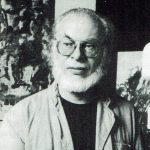 KONRAD, Rudolf
KONRAD, Rudolf
Rudolf Konrad taught as professor for eurythmics at the Universities of Music in Hanover and Vienna and wrote numerous writings and books with a focus on specialist theory.
Born on 9 December, 1922 in Königsberg, Konrad grew up in his bourgeois homeland, received a musical education in the Stadtkapelle and developed his pianistic skills. He became a flutist in the infantry music corps and joined the army in France and Russia during the Second World War, where he was taken as a prisoner of war in 1944. In the army he founded an orchestra for which he arranged, composed and replaced missing instruments in the replica.
After his release from captivity as a POW in 1949, he began studying flute and composition at the Braunschweig Conservatory and at the Berlin University of Music, as well as eurythmics with Gertrud Gottschalk-Wegmann, a Dalcroze student from Hellerau. In addition to demanding musical exercises, Konrad found an approach to integrate mind and body into his studies after the psychic stress of the war and graduated with the eurythmics diploma. His experiences with Gottschalk-Wegmann in relation to interaction and space influenced and encouraged him to discover the playful side of eurythmics in contrast to the severity of the teacher herself.
Konrad first worked at the Staatstheater Braunschweig as a flutist and arranger and, after initial hesitation, founded the first private Eurhythmy Institute in Germany. In 1970, he took over the management of the Eurythmics Department at the Hanover University for Music and Theatre and was finally appointed professor in 1975. In the years 1981-83 and 1988-89 he also taught as a visiting professor at the Vienna University of Music and Performing Arts.
Throughout his life, he devoted himself to his diverse interests and talents: since the 1950s he had been experimenting with the sounds of Far Eastern gongs and their influence on physical tension. In 1992, he published the novel "Die Schule von Sokolokorowka - das Leben eines Musikers in Krieg und Gefangenschaft" ("The School of Sokolokorowka - the Life of a Musician in War and Captivity"), which is listed as "recommendable" for the school. In 1996, after his retirement, he displayed his works in painting and sculpture in an exhibition. Konrad died on 8 November 2009 in Hanover.
Rudolf Konrad endeavored to update the theme of eurythmics, which he wanted to develop further from the roots of historical eurythmics and their representatives. He formulated the necessity of a systematization and specification of the subject from an ideology-free point of view and developed scientific theoretical foundations for the theme of eurythmics, in particular the differentiation in relation to other methods and general music pedagogy. He sensitizes the world of eurythmics with terms and their meaning (interaction, sensomotorics, sequence chains etc.), which are modified in later publications of numerous experts (e.g. Schaefer, Ribke). Various eurhythmic graduates of Konrad taught and teach as professors* at various Universities of Music, such as in Hamburg and Vienna.
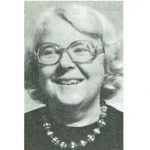 KRAUSE-WICHERT, Hannelore
KRAUSE-WICHERT, Hannelore
Hannelore Krause-Wichert was born 1921 in Mülheim/Ruhr (Germany). There she spent a happy and sheltered childhood. She completed her eurhythmics studies in the war- and post-war-years in Essen and Leipzig under the guidance of Elfriede Feudel, her highly valued teacher. In 1948 Hannelore Krause-Wichert started her teaching and lecturing experience, and there was hardly a target group she did not work with. She taught at various educational academies and educational colleges specifically
- at the school of music and community college in Mülheim,
- at a conference center for mentally handicapped children and a special school for the learning disabled,
- in teacher trainings,
- at the University of Music Hannover,
- in various technical schools for social education.
From 1968 to 1981 she was part of the board of the recently founded Federal Association for Eurhythmics Education, and she tried to establish the instruction of eurhythmics at the level of the national education guidelines.
With her lectures and publications she relentlessly sought to bring the profession of eurhythmics teachers to the public. First and foremost there are her Blätter zur Berufskunde (1981), in which she described the main aspects of the eurhythmics profession for the employment offices in Western Germany. With her husband Paul A. Wichert, she published the first ever journal for eurhythmics in Germany, Rhythmik in der Erziehung.
From 1972 to 1993 she taught as a lecturer at the University of Applied Sciences for Social Education Hildesheim, where in 1981 she was appointed a regular professor. Since 1972, Prof. Krause-Wichert has been an active teacher in training courses for "Qualification for Eurhythmics Education" and has developed a corresponding curriculum as well as textbooks. The first courses were held under the Federal Association of Eurhythmics Education, until 1982 she co‑founded Bildungswerk Rhythmik e.V.
We remember a charming teacher personality and a lovely colleague, who stood for her opinion with great humour and great decisiveness and who approached us young colleagues with great openness, curiosity and tolerance. One colleague stated: "My strongest impressions was of her attitude of constructive patience and friendliness, with which she was able to create a good atmosphere even in difficult situations."
On March 30, 2015, Hannelore Krause-Wichert died at the age of 93 years.
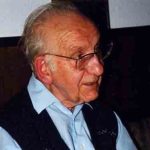 LORENZ, Karl
LORENZ, Karl
Karl Lorenz was born 1915 in Westfalen/Germany. He developed early his talents in music and started studying piano at the age of 16. During that time Elfriede Feudel convinced him to study eurhythmics as well and at the age of 20 he already gave eurhythmics lessons and aural training at the Conversatory of Dortmund.
Eurhythmics, music and folk dance have been the main factors of his professional career. Karl Lorenz developed instruments, as the table-harp, explored improvisation in groups, and built up a eurhythmics department within the LAG (Landesarbeitsgemeinschaft) music which enabled him to organise the International eurhythmic-seminars at the Academy Remscheid. His huge archive of European folk music was the basis for 163 school broadcasts from Radio Bremen.
As a pedagogue, musician, author of more than 100 articles in the journal »Rhythmik in der Erziehung« (Eurhythmics in Education) and editor he expressed himself in a wide range of activities. His particular attention in science was focused on biological cybernetics. The transfer about the principle of control and regulation in living organisms on eurhythmics stimulated the theoretical discussions and knowledge.
His merits have been as varied as his own professional interests, the recognition of the German republic he obtained with the decoration of the Federal Cross of Merit. 94 years old Karl Lorenz died in 2009
PARKER, Lisa
Grace, ease, elegance, perfection, humanity… these are the kinds of words people reached for when the Dalcroze Society of America solicited tributes to Lisa Parker for our magazine, Dalcroze Connections. We have received dozens of them, far more than we can print in one issue. Many chose to speak to Lisa directly, in the first person, proof of how personally we feel her loss. Reading through them, I marvel at the ability of one life to so profoundly affect so many so deeply. Here in the U.S. Lisa has long been something we could all agree on: the brilliance and beauty of her playing, the crystalline musical intelligence, the seemingly effortless execution of her lessons. She was not interested in credit or praise and deflected all such talk whenever it was directed towards her. Her gaze was always outward, toward her students. She brought us closer to ourselves through the power of music and movement, and if forced to keep only one thing from my time with her, this is what I would choose. Stepping out of Lisa’s classroom, I felt, at least for a while, all the things we attribute to her: grace, ease, buoyancy. I felt seen and recognized, a little more in touch with my own humanity. That’s a gift worth passing on. Thank you, Lisa Parker.
Lisa earned a BA cum laude in music from Smith College in 1956 and a Dalcroze License from the Dalcroze School of Music (New York, NY) in 1957, studying with Dr. Hilda Schuster. In 1962 she received a Master of Music in Conducting from New England Conservatory of Music. In 1965, she was granted the Diplôme from L'Institut Jaques-Dalcroze. In 1977, Lisa founded the Dalcroze Department at the Longy School of Music in Cambridge, MA and built it into a world-renowned training program for graduate students. She traveled extensively around the world teaching the Dalcroze method. Her mentorship drew many students, particularly those from Europe and East Asian countries, to the program at Longy. Her creativity and natural ability to improvise inspired countless musicians through her many decades as a master teacher. In 2003, Lisa was awarded the first George Seaman award for excellence in teaching, at the Longy School of Music. Although she formally retired in 2017, she remained an active teacher until disease progression robbed her of the ability to play the piano. Lisa served in numerous leadership roles within the Dalcroze Society of America, including President, Vice President, Chair of the national conference, and editor of the Journal. In 2018, she received a Lifetime Achievement Award from the Dalcroze Society of America for her unparalleled contributions to the Dalcroze community, at home and abroad.
Michael Joviala
Spring, 2023
Brooklyn, NY, USA
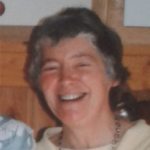 REDMOND, Ruth
REDMOND, Ruth
Ruth Redmond (née Stewart) is remembered as an inspirational musician, Dalcroze Eurhythmics teacher, teacher trainer, and thinker.
Ruth enrolled at the Dalcroze Society's Training Centre in Eurhythmics, London - aged just 17 - and graduated in 1952. She studied viola at the Guildhall School of Music and Drama, and then with renowned pianist and harpsichordist Edith Picht-Axenfeld, at the Staatliche Hochschule für Musik, Freiburg im Breisgau, Germany. Ruth returned to England to teach music at various colleges, but did not want to teach Dalcroze to children (at that time, the only opportunities were in nurseries and schools). She eventually enrolled at the University of York to achieve recognised teacher status.
Through contact with Elizabeth Vanderspar, Ruth found her metier in Dalcroze teacher training. At Roehampton Institute of Higher Education, her passion became the Dalcroze Subjects: musical phenomena that can be seen in life, arts, music, and teaching itself. She also taught piano improvisation, drawing especially from the music of Messiaen. The beneficiaries of her teaching became some of the world's leading Dalcroze practitioners, including Ruth Alperson (USA), Ora Goraly (Israel), Karin Greenhead (UK), Yuri Ishimaru (Japan), Ava Loiacono (Italy), Sandra Nash (Australia), and Teresa Nowak (Poland).
Ruth married Tony Redmond in 1976 and was awarded the Diplôme Superieur Jaques-Dalcroze in 1981. Chairman of the Dalcroze Society from 1984, Ruth edited the English translation of Marie-Laure Bachmann’s landmark book, Dalcroze Today: An Education through and into Music (Oxford University Press, 1991).
In 1993, Ruth submitted an MPhil thesis: 'The nature and role of the kinaesthetic sense in regard to music-learning and the development of musical understanding.’ The examiners at the Institute of Education, University of London invited her to revise the thesis, but she never did. The thesis, and audio recordings of her reading it aloud, can be consulted in the Dalcroze UK archive.
These and other legacies were discussed during a special roundtable at the 4th International Conference of Dalcroze Studies (ICDS4) in 2019. You can view it here.
Ruth is remembered as a deeply thoughtful, inspiring, and student-centred pedagogue.
Ruth Finnemore Redmond (née Stewart): born 10 September 1932, died 14 November 2018.
John Habron
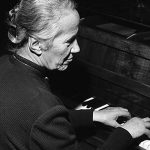 SCHEIBLAUER, Mimi
SCHEIBLAUER, Mimi
Mimi Scheiblauer (1891-1968) is mainly known by her work with disabled persons, especially children. The fact that she had beside this issue a much wider ranged influence in eurhythmics shall be documented here.
Beginning her professional career in Basel (Switzerland), where she studied piano at the conservatory, she followed Jaques-Dalcroze to Dresden/Hellerau and graduated 1911 as a teacher of “Rhythmische Gymnastik/rythmique gymnastique“. Because of her excellent gift for piano improvisation and solfège she, as the first woman at all, was asked to teach at the conservatory of Zürich, where she started 1912 to give lessons in piano, solfège and rhythmics and where she kept active up to her death in november 1968.
In 1922 Mimi Scheiblauer began to work with disabled children, with students from the curative education (“Heilpädagogisches Seminar”), and as well with teachers and educators from other faculties. Here she developed the idea of using special devices such as balls, hoops, ropes, and little bags filled with sand for teaching deaf and blind persons, so that their experience of music, movement and interaction could rise and deepen.
She continuously worked towards a regular State-Department “Musikalisch-rhythmische Erziehung” at the Conservatory Zürich, which was founded 1926 and was lead by herself. During the next years, beside her work with students and educators, she cooperated with the Theater Zürich and created numerous choreographies for operas.
In 1942 Mimi Scheiblauer founded a publishing company for articles about music and eurhythmics and she also started working as editor for the journal “Lobpreisung der Musik”. This journal developed to be the professional journal for eurhythmics for more than 25 years. In 1964 Mimi Scheiblauer founded the Swiss professional association for eurhythmic practitioner. For her work she was honored several times, amongst others by the university as well as by the city of Zürich.


